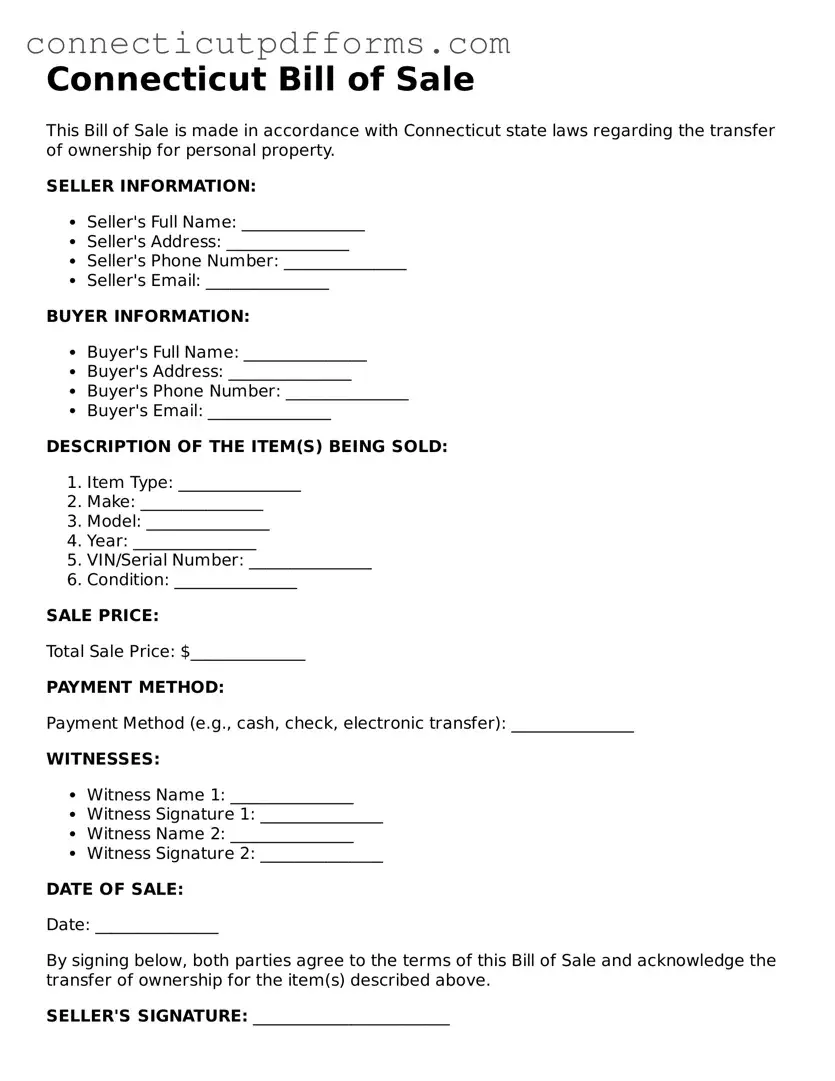Filling out the Connecticut Bill of Sale form requires careful attention to detail. One common mistake is failing to provide complete information about the buyer and seller. Ensure that both parties' names, addresses, and contact information are accurate. Missing or incorrect details can lead to disputes later on.
Another frequent error is neglecting to include a clear description of the item being sold. This includes not only the make and model but also any identifying numbers, such as a Vehicle Identification Number (VIN) for cars. A vague description can create confusion and complicate ownership verification.
Many people overlook the importance of specifying the purchase price. Clearly state the amount agreed upon. Leaving this blank or writing an ambiguous figure can lead to misunderstandings or legal issues down the line.
It’s also essential to indicate the date of the transaction. Some individuals forget to fill this in, which can complicate matters of ownership transfer. A proper date ensures that both parties have a clear record of when the sale took place.
Some sellers mistakenly think that the Bill of Sale does not need to be signed by both parties. This is incorrect. Both the buyer and seller should sign the document to validate the transaction. Without signatures, the Bill of Sale may not hold up in legal situations.
In addition, people sometimes fail to provide copies of the Bill of Sale to both parties. Each party should retain a signed copy for their records. This serves as proof of the transaction and can be crucial for future reference.
Another mistake is not checking for any local regulations that may apply. Different towns or cities in Connecticut may have specific requirements regarding the Bill of Sale. Always verify these before finalizing the document.
Individuals often forget to include any warranties or disclaimers regarding the item sold. If the item is sold "as is," it’s vital to state this clearly. This protects both the buyer and seller from future claims regarding the item's condition.
Lastly, some people assume that the Bill of Sale is only necessary for high-value items. This is a misconception. A Bill of Sale is important for any transaction involving the transfer of ownership, regardless of the item's value. Always use this form to ensure a smooth and legally sound transaction.
